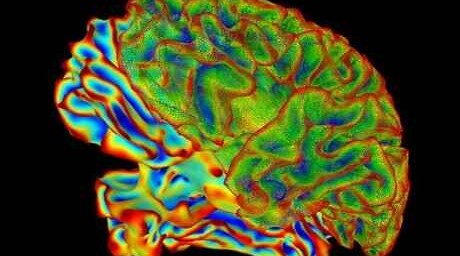Alzheimer's spreads differently to how we thought
This is the first time that human data has been used to track which processes control the development of Alzheimer’s disease over time

An international research team, led by the University of Cambridge, has used human data to quantify the speed of different processes that lead to Alzheimer’s disease — and found that it develops in a very different way than previously thought.
The team’s results, published in the journal Science Advances, could have important implications for the development of potential treatments.
In Alzheimer’s disease, two proteins called tau and amyloid-beta build up into tangles and plaques — known collectively as aggregates — causing brain cells to die and the brain to shrink. This results in memory loss, personality changes and difficulty carrying out daily functions. The disease is, however, difficult to study, since it develops over decades and a definitive diagnosis can only be given after examining samples of brain tissue after death.
For this reason, researchers have relied largely on animal models to study the disease. Results from mice suggested that Alzheimer’s disease spreads quickly, as the toxic protein clusters colonise different parts of the brain. The processes within the brain which result in Alzheimer’s disease have thus been described using terms like ‘cascade’ and ‘chain reaction’.
The new study saw the researchers use post-mortem brain samples from Alzheimer’s patients, as well as PET scans from living patients, who ranged from those with mild cognitive impairment to those with late-stage Alzheimer’s disease, to track the aggregation of tau. By combining five different datasets and applying them to the same mathematical model, the researchers observed that the mechanism controlling the rate of progression in Alzheimer’s is the replication of aggregates in individual regions of the brain, and not the spread of aggregates from one region to another.
“The thinking had been that Alzheimer’s develops in a way that’s similar to many cancers: the aggregates form in one region and then spread through the brain,” said Dr Georg Meisl from the University of Cambridge, first author on the study. “But instead, we found that when Alzheimer’s starts there are already aggregates in multiple regions of the brain, and so trying to stop the spread between regions will do little to slow the disease.”
This is the first time that human data has been used to track which processes control the development of Alzheimer’s disease over time. It was made possible in part by the chemical kinetics approach developed at Cambridge over the last decade, which allows the processes of aggregation and spread in the brain to be modelled, as well as advances in PET scanning and improvements in the sensitivity of other brain measurements.
“This research shows the value of working with human data instead of imperfect animal models,” said co-senior author Professor Tuomas Knowles, also from Cambridge. “It’s exciting to see the progress in this field — 15 years ago, the basic molecular mechanisms were determined for simple systems in a test tube by us and others; but now we’re able to study this process at the molecular level in real patients, which is an important step to one day developing treatments.”
The researchers found that the replication of tau aggregates is surprisingly slow — taking up to five years. As noted by co-senior author Professor Sir David Klenerman, from the UK Dementia Research Institute at the University of Cambridge, “Neurons are surprisingly good at stopping aggregates from forming, but we need to find ways to make them even better if we’re going to develop an effective treatment.”
The researchers say their methodology could be used to help the development of treatments for Alzheimer’s disease by targeting the most important processes that occur when humans develop the disease. In addition, the methodology could be applied to other neurodegenerative diseases, such as Parkinson’s disease.
“The key discovery is that stopping the replication of aggregates, rather than their propagation, is going to be more effective at the stages of the disease that we studied,” Prof Knowles said.
The researchers are now planning to look at the earlier processes in the development of the disease and extend the studies to other diseases such as frontal temporal dementia, traumatic brain injury and progressive supranuclear palsy, where tau aggregates are also formed during disease.
